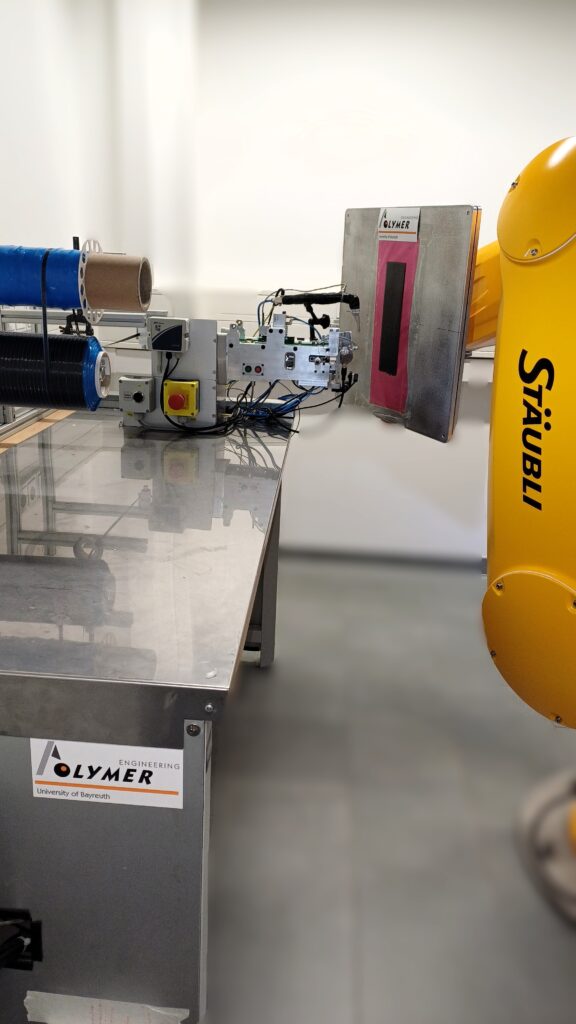Fibre composite technology
Processing fibres and polymers into composites
Fibre composites have unique properties. Their excellent mechanical characteristics combined with low weight make them the material of choice for many lightweight applications. However, their processing requires appropriate technologies and experience to produce high-quality and innovative materials.
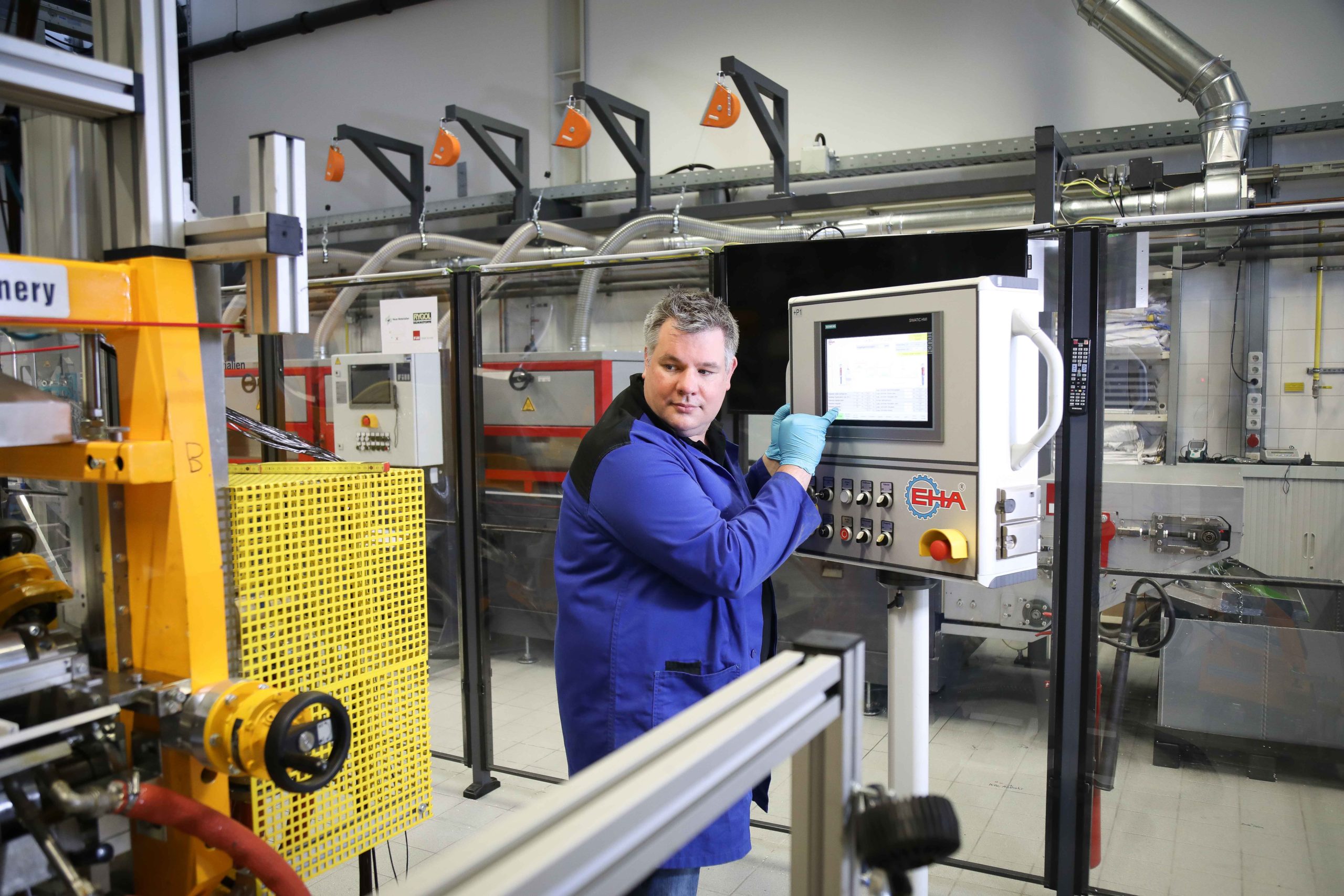
Contact: M.Sc. Florian Max
Phone: +49 921 55 7568
E-mail: florian.max@uni-bayreuth.de
Automated Fiber Placement (AFP) enables precise and repeatable manufacturing of composite materials. In this process, a slit tape is laid in multiple layers on top of each other and then cured. This method ensures high accuracy and consistency in the production of composite components.
Technical data
| Single spool | |
| Lay-up plate heatable | up to 180°C |
| Hot air heating | 50°C-400°C |
| Programmable gaps and overlaps | -99% to 99% of tape width |
| Continuously adjustable tape width | 1/8” to 1/2” |
| Lay-up speed | up to 400 mm/s |
| Contact pressure | up to 200 N |
| Continuously adjustable angle offset | |
| Maximum part width | 500 mm |
| Maximum part length | 500 mm |
Location: Neue Materialien Bayreuth GmbH
Contact: Florian Max, M. Sc.; Alexander Schmitt
Phone: +49(0)921 55 7568; +49(0)921 55 7563
Mail: florian.max@uni-bayreuth.de ; alexander.schmitt@uni-bayreuth.de
Test chamber volume [l] 100
Temperature [C°] -70 to 180
Heating/cooling rate [°C/s] 3
Humidity control
10 % to 98 % r.h. in the temperature range from 10 to 95°C
Location: University of Bayreuth
Interior [cm3] 75 x 100 x 75
Usable space volume [m3] 0.562
Maximum temperature [°C] 250
Location: University of Bayreuth
Technical data
| Type | Nodopur VS-2k |
| Serial Number | #2341 |
| Year of Manufacture | 2024 |
| Operating Pressure | 6-8 bar |
| Nominal Flow Rate | 1200 l/min |
| Machine Weight | 550 kg |
Location: Neue Materialien Bayreuth GmbH
Contact: Florian Max, M. Sc.
Phone: +49(0)921 55 75 68
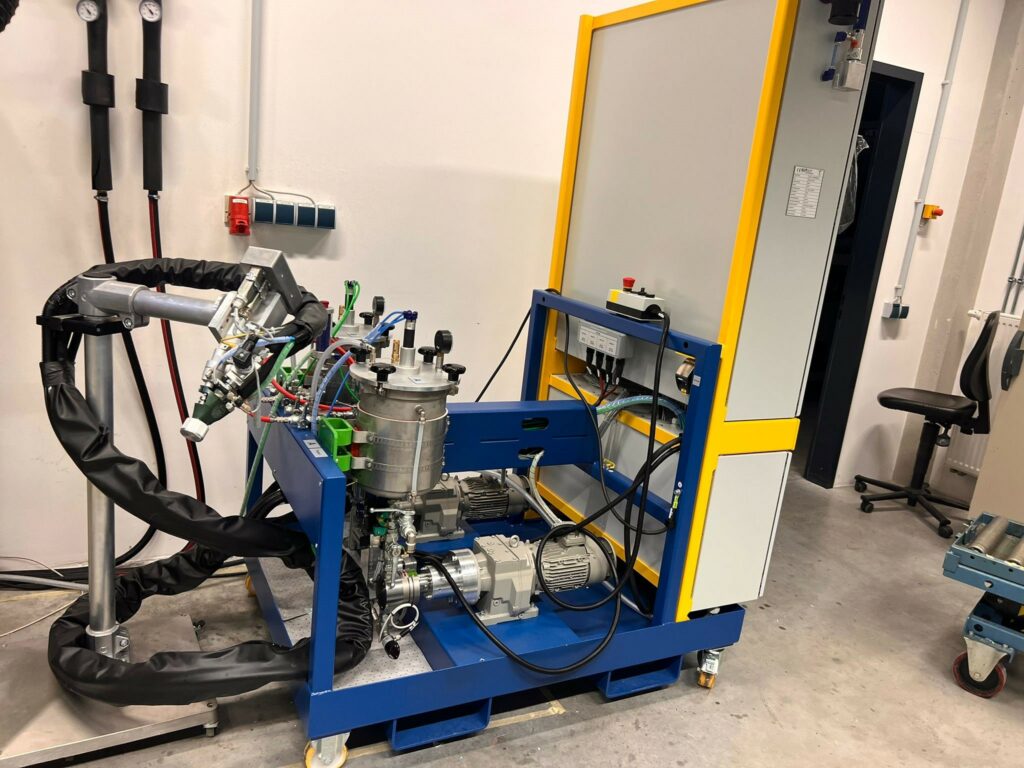
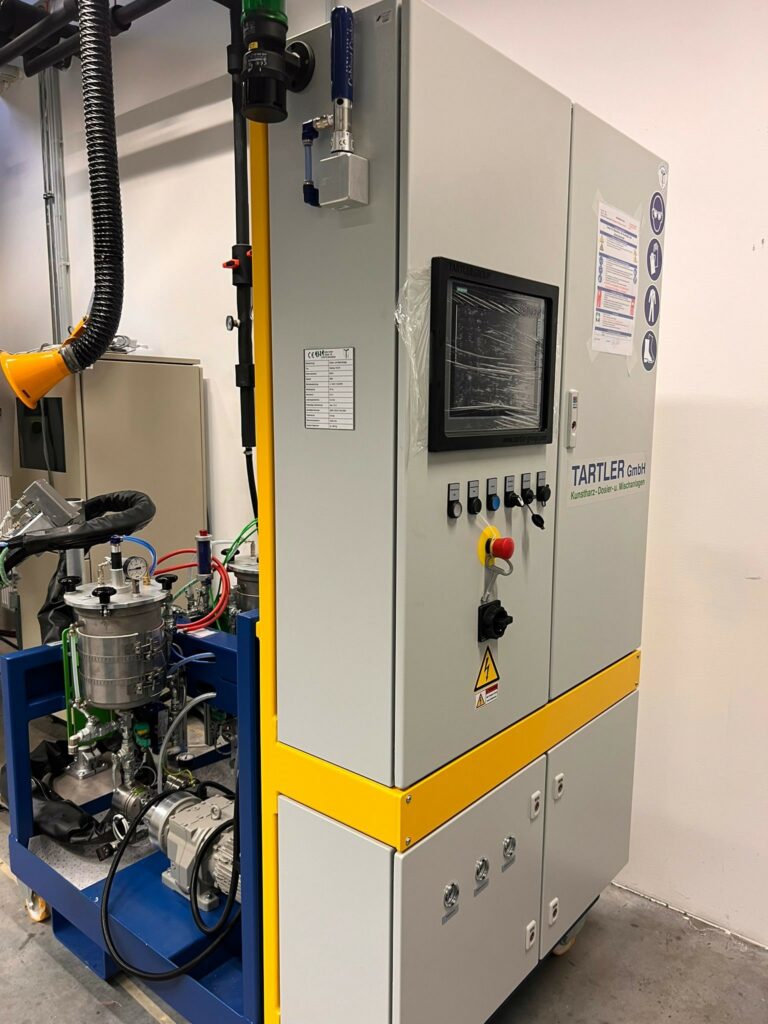
Speed [rpm] 30 – 9000
Batch size [l] 1.5
Motor power [W] 550
Processable materials
Suitable for ultra-fast agitation and dispersion of highly filled reactive resin and paint systems
Location: University of Bayreuth
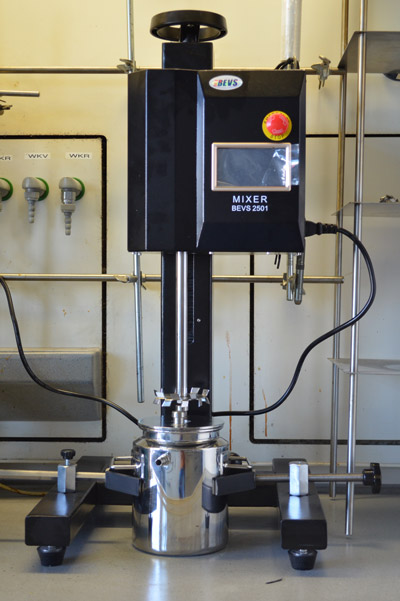
The chair has a UD 500 fiber spreading unit from Karl Mayer.
Carbon fiber and glass fiber rovings can be spread to defined areal weights. Furthermore, the system has a powder binder dosing unit for fixation of the spread tapes.
Technical data
| Maximum tapewidth | 10 inch (250 mm) |
| Maximum number of rovings | 24 |
| Roving Range | 12 K up to 60 K |
| Machine velocity | 1 – 20 m/min |
| Vibration frequency | 0 – 50 Hz |
| Deflection angle | 0 – 60 ° |
| Fiber tension | Adjustable up to 2000 cN per Roving |
| Temperature | Room temperature up to 200 °C |
| Powder binder unit | Available |
Location: Neue Materialien Bayreuth GmbH
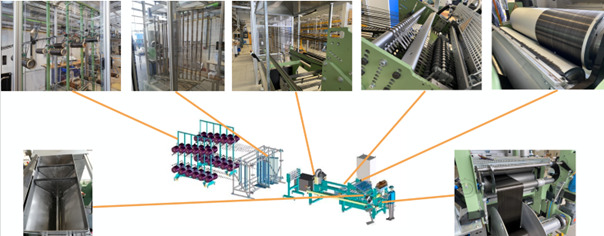
Materials: -Towpreg winding -Wet winding -1 creel Max. winding diameter [mm] up to 254 Max. winding length [mm] up to 800 Max.. rotation speed [rpm] up to 100 Max. speed of the horizontal slide [cm/s] up to 152.4 Working fiber width [in] 1/8, 1/4, 1/2 NOL rings manufacturing [-] according to ASTM D 2290 Heating [°C] temperature-controllable from RT to 250 Location: Neue Materialien Bayreuth GmbH
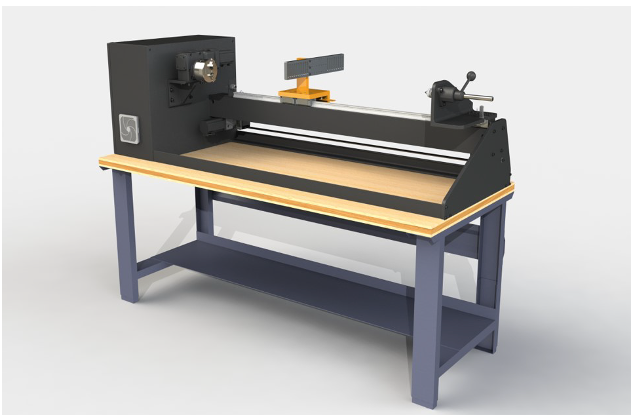
Plate heating [°C] max. 200
Pressure range
0%
Volume of pressure vessel [l] 15
Features
– Heating plate 650 x 600 x 100 mm
– Aluminium worktop, thickness: 15 mm
– High pressure hose heatable up to 150 °C
Location: University of Bayreuth
Maximum pressure [ bar] 8
Maximum temperature [°C] 180
Maximum heating rate [°C/min] 3
Feeding diameter [mm] ø 670
Feeding length [mm] 800 mm
Monitoring of 4 component temperatures
Monitoring of 4 vacuum lines
Location: Neue Materialien Bayreuth GmbH
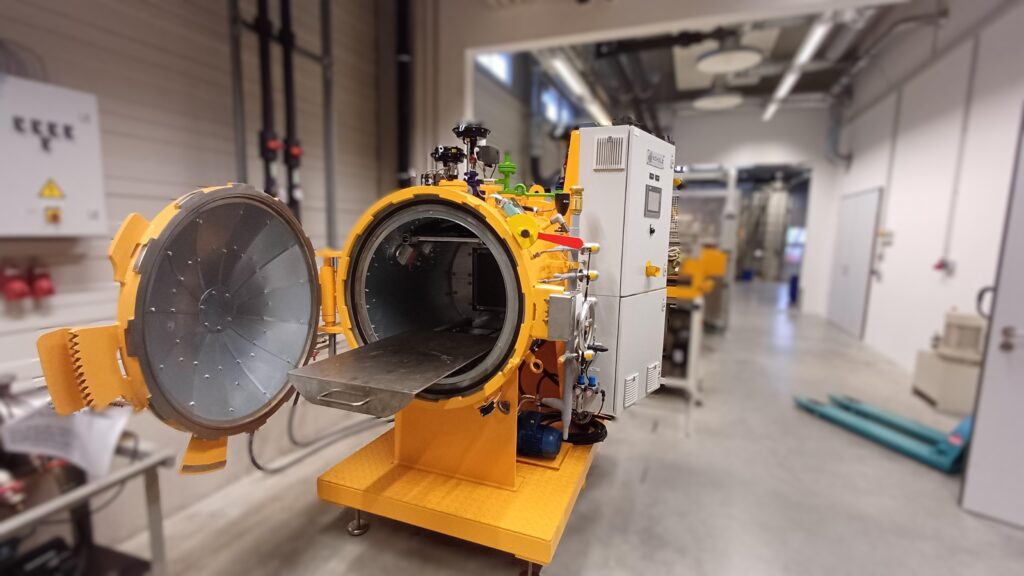
Injection pressure
0%
Post pressure
0%
Resin/hardener tank temp. [°C] 150
Mixing ratio resin/hardener 100/3 to 100/100
Features
Electric agitator / vacuum pump
Location: Neue Materialien Bayreuth GmbH
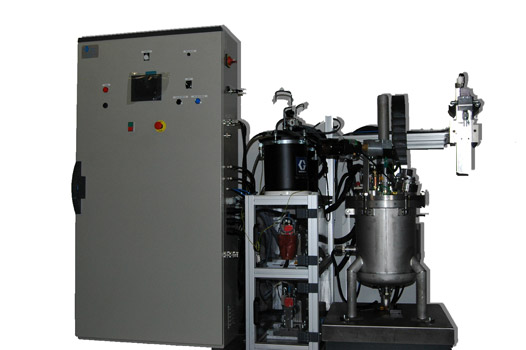
Plate size [mm2] 300 x 300
Max. press force [kN] 200
Max. sheet temperature [°C] 300
Heating rate [K/min] up to 15
Cooling rate [K/min] > 30
Special feature
Test press equipped with a load cell for precise control of press force
Location: Neue Materialien Bayreuth GmbH
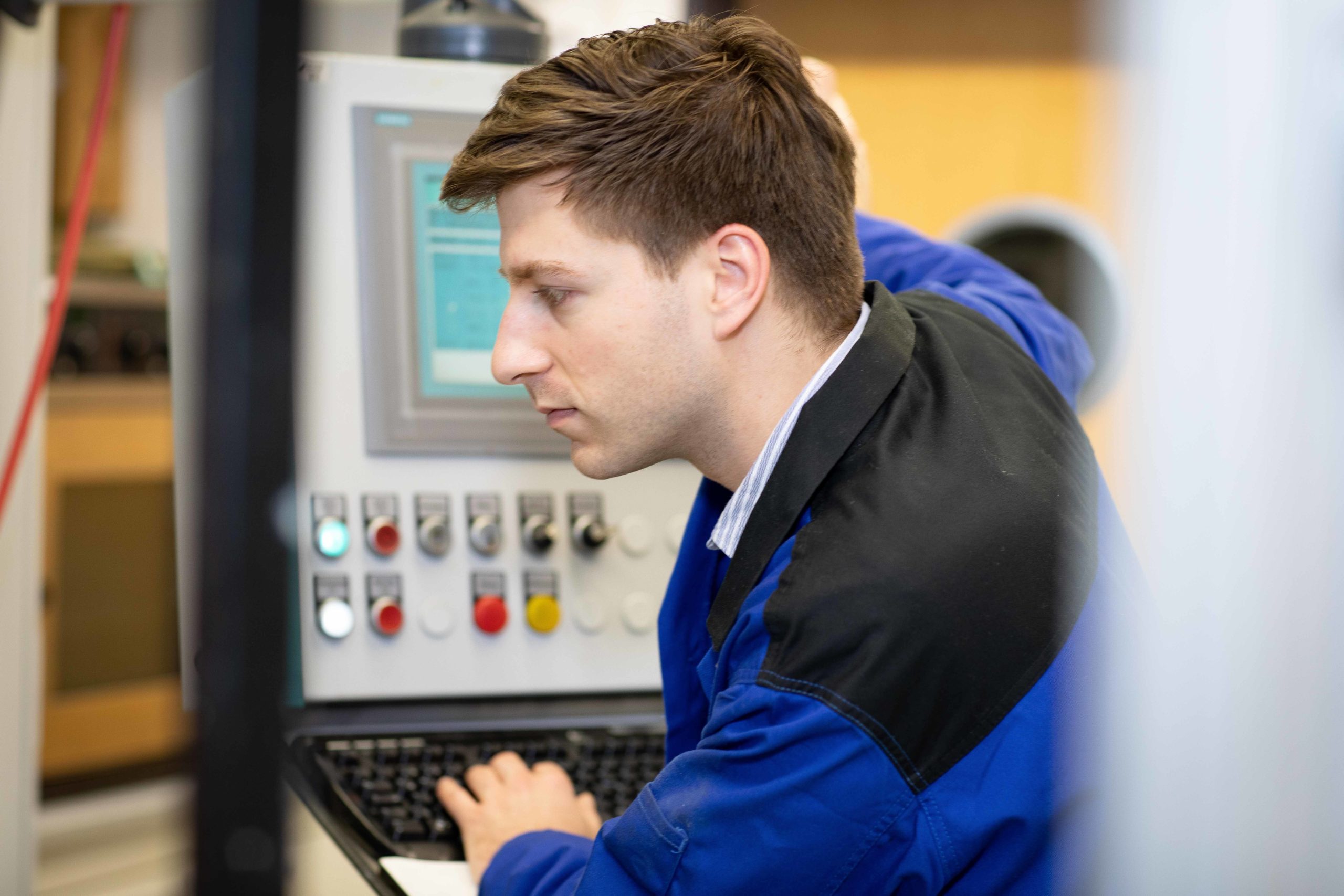
Pressing area [mm] 600 x 600
Pressing force [kN] 1000
Cylinder stroke [mm] 450
Working temperature [C°] 25 – 250
Max. heating/cooling rate [C°/min] 7
Temperature control medium
Heat transfer oil
Location: Neue Materialien Bayreuth GmbH
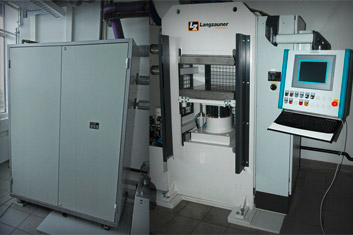
The process is unique as it allows direct lamination in one step. The system consists of a single-screw extruder and a special laminating unit. This allows copper foils to be laminated directly onto a substrate material. The extruded semi-finished product can be further processed in the electrical industry. Furthermore, it is possible to impregnate glass and carbon fibre mats directly using the system.
| Screw diameter laboratory kneader [mm] | 30 |
| L/D | 20 |
| Speed max. [1/min] | 180 |
| Torque max. [Nm] | 94 |
| Material throughput [kg/h] | 4 – 25 |
| Processing temperatures [°C] | up to 450 |
| Heating system | electric |
| Cooling | Air |
| Fittings | Calender with haul-off unit |
| Location | NMB Modul 1 – Bayreuth |
| ContactPhone | Markus Schirmer+49 921 / 55 7550 od.7551 |
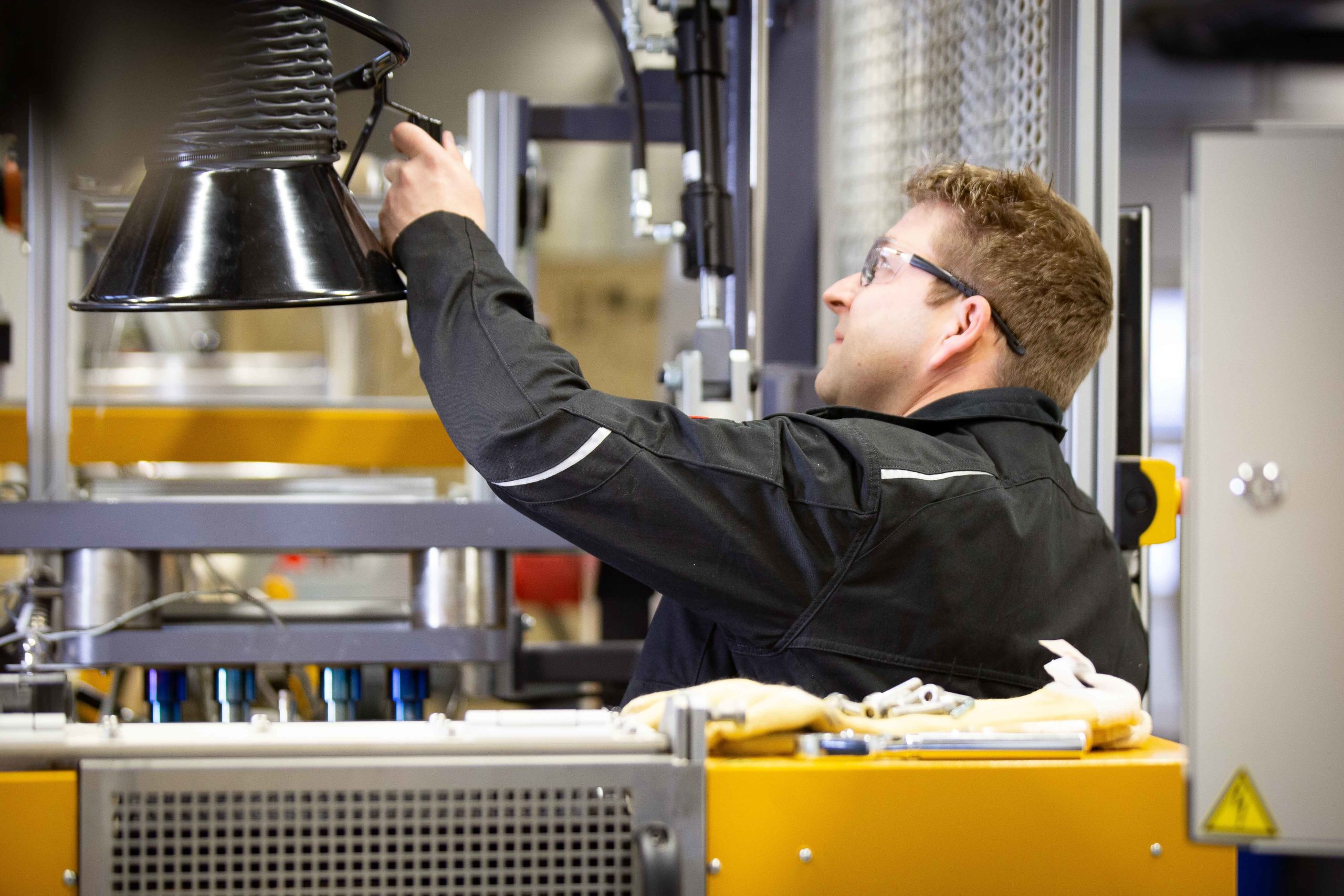
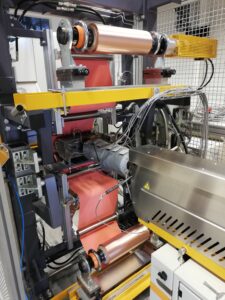
Working width [cm] max. 30
Web speed [m/min] up to 10
2 calenders [°C] temperature-controllable from 1 to 250
B staging temperature [°C] 250 (2 separately temperature-controlled heating plates)
Fibres / semi-finished fibres
– up to 32 rovings; in-line spreading unit available
– textile semi-finished products (woven fabrics, scrims, fibre mats) up to 30 cm wide
Matrix materials
duromer, solvent-free resin systems in the viscosity range from 10 to 50,000 mPas
Impregnation technology
Foulard (immersion bath), comma blade, indirect roller application
Location: Neue Materialien Bayreuth GmbH
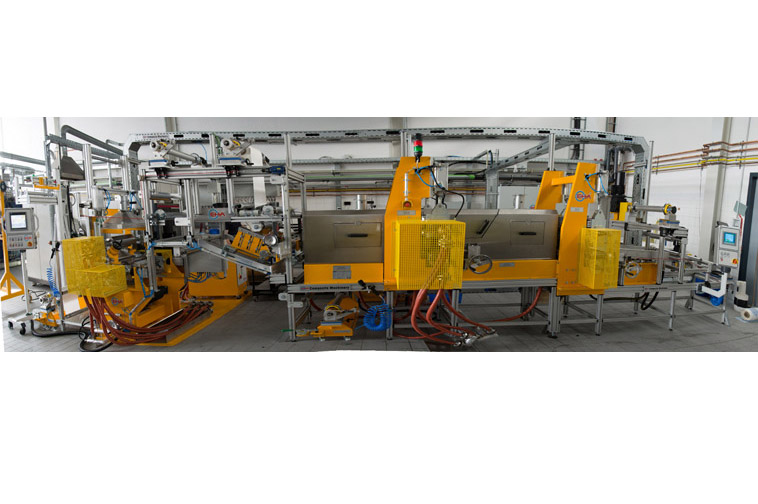
Features
Recording of the material temperature during cross-linking
Oil bath for temperature control
Temperature recording
Determination of relative viscosity
Location: University of Bayreuth
Speed [rpm] 510 – 3500 (stepless)
Mixing time[sec] 5 – 300
Container sizes [ml] 185, 60, 25, 12
Location: University of Bayreuth
Mixing capacity [g/lb.] Up to 800/1.76
Mixing volume [ml/gal] Up to 750/0.19
Mixing Speed [rpm] 800 – 1950
Mixing time [min] 10
Programs [ml] 20
Mixing steps/programs 5
Vacuum Yes
Minimum pressure [mbar] 0
Location: University of Bayreuth
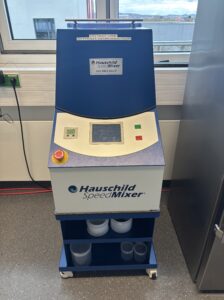
Working width [cm]
45
Minimum gap width [µm]
5 (gap-controlled), < 5 (force-controlled)
Throughput per hour [l]
0.5 to 60
Process temperature [°C]
Room temperature up to 60
Fittings
Heating unit
Processable materials
Modified and filled resin systems, elastomers;
Solvent-based systems can be processed
Location: Neue Materialien Bayreuth GmbH
max. frequency in echo mode [MHz] 16 in water
max. frequency in through-transmission mode [kHz] 120 in air
max. amplification [dB] 90
min. defect size [mm] 5 (in air)
0.25 (in water)
Testing options
A-, B- and C-scan, 3D scan
Software for quantitative evaluation of delamination areas
Location: Neue Materialien Bayreuth GmbH
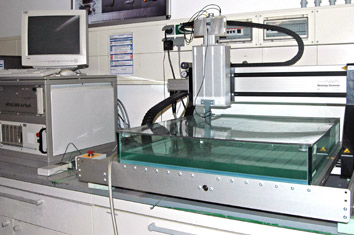
Interior volume [l] 49
Temperature [C°] 20-200
Vacuum [mbar] 1-1013
Location: University of Bayreuth

